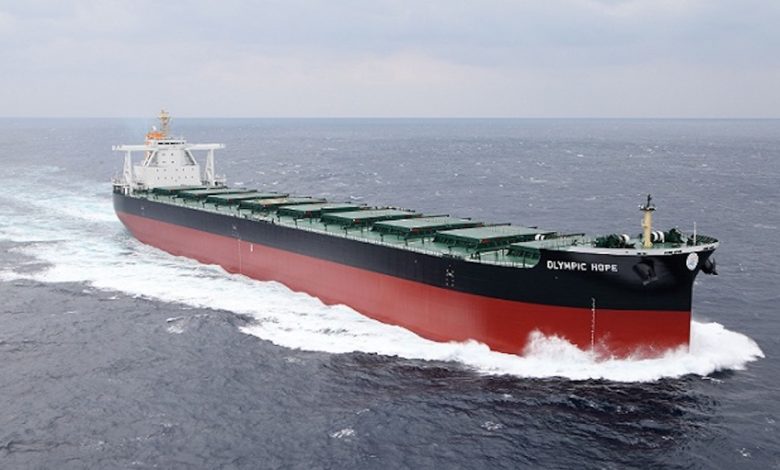Capes crack $40,000 mark

Capesizes are commanding $40,000 a day, helping propel the Baltic Dry Index past the 3,000 mark for the first time in more than a decade, with many analysts suggesting the floor of the sector has now hit new, sustainable levels.
Brazilian miner Vale has been the most active driver of the markets this week, followed by Rio Tinto.
The C10 transpacific round voyage yesterday surpassed $40,000 a day and the Baltic Exchange reported the 5TC at $39,589 a day.
The cape FFA markets show how bullish participants in the sector are on prospects through to the end of the year. May FFAs stand at $39,746 a day, June at $36,857 a day with July moving significantly higher yesterday to $33,243 a day and the whole of Q3 at $30,496 a day and Q4 at $26,350 a day.
The floor of the market appears to be rising as the fundamentals improve
Analysts are pointing out how firm the current cape run looks. For example, research from brokers Arrow this week points out that in the past 300 days there has not been a single capesize index below $10,000, the first time that has happened since 2011.
“The floor of the market appears to be rising as the fundamentals improve,” Arrow stated.
Meanwhile, New York-based Breakwave Advisors observed on Tuesday that this week marks the third time cape rates have past the $35,000 a day mark in less than nine months. In the previous seven years – from 2014 to 2020 – capesize rates had touched the $35,000 level only once, in September 2019.
“The fact that we are visiting such relatively elevated levels more frequently in the last twelve months is indicative of some type of transformation in the underlying fundamentals of the capesize market,” Breakwave Advisors suggested, adding: “A new multi-year high is now within reach, and that would confirm a higher low/higher high pattern, which should provide a significant confidence boost in an already booming dry bulk market.”
Breakwave’s dry bulk shipping exchange traded fund (ETF) was crowned the best performing ETF in the first quarter of the year. According to ETF.com, the Breakwave Dry Bulk Shipping ETF returned almost 120% in the first three months, smoking the cannabis-related ETF that came in as the second best performer in the period with gains of 66%.
Breakwave discussed the rising iron ore prices in relation to the cape markets in its report this week, noting: “Spot prices for iron ore are approaching $200/tonne and thus any global miner that can produce and put a tonne of product on a vessel is scrabbling to do so.”
It has not been iron ore alone that has helped send cape rates skyward. Chinese consumption of coal from overseas markets is on the rise too.
Analysts at Braemar ACM noted in a report this week that now is the key restocking period for power companies in China and they have been found to be low on supplies ahead of the summer air conditioning demand season. Coal inventories at Qinhuangdao, for example, have fallen below 4m tonnes, 34% lower than average for the time of year.
How much the cape markets move ahead in the short term is unclear given long holidays in China and Japan next week.
Researchers at Lorentzen & Stemoco predicted today that market levels will prevail next week but on much more subdued activity.
